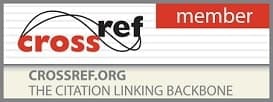
Printed Journal | Refereed Journal | Peer Reviewed Journal
Peer Reviewed Journal
International Journal of Horticulture and Food Science
2025, Vol. 7, Issue 8, Part C
Revolutionizing fruit quality assessment non-destructive techniques for sustainable horticultural practices
Emilia R Svensson and Pierre J Lefevre
The assessment of fruit quality has always been a decisive factor in the success of horticultural industries, shaping consumer acceptance, export potential, and post-harvest management strategies. Conventional destructive methods such as titration, refractometry, and chemical assays, though precise, require fruit samples to be cut, crushed, or otherwise altered, leading to waste and limited scalability. In recent years, non-destructive techniques have emerged as innovative alternatives that allow rapid and reliable analysis of fruit characteristics without compromising their integrity. These technologies include near-infrared spectroscopy, hyperspectral imaging, Raman spectroscopy, electronic noses, and computer vision systems. They have been successfully applied to evaluate attributes such as sugar content, acidity, moisture, firmness, ripeness, internal defects, and even early disease infections. This paper examines how these techniques are transforming fruit quality assessment within the broader framework of sustainable horticultural practices. Drawing on significant studies from the last two decades, the review synthesizes evidence on the accuracy, efficiency, and practical applications of non-destructive methods compared with traditional approaches. Results demonstrate that these tools not only reduce food waste but also enhance supply chain transparency, strengthen consumer trust, and contribute to sustainability goals by supporting better grading, packaging, and storage decisions. The comparative analysis highlights how non-destructive methods achieve superior throughput and predictive reliability, with particular relevance for large-scale production and smart farming systems.
The discussion emphasizes their role in integrating with digital agriculture platforms, enabling real-time monitoring and data-driven decision-making. At the same time, the challenges of cost, accessibility, and field adaptability are acknowledged as areas that demand further research and innovation. Overall, the findings confirm that non-destructive fruit quality assessment technologies are not just complementary tools but key drivers of sustainable horticultural transformation.
Pages : 164-169 | 45 Views | 19 Downloads

How to cite this article:
Emilia R Svensson, Pierre J Lefevre. Revolutionizing fruit quality assessment non-destructive techniques for sustainable horticultural practices. Int J Hortic Food Sci 2025;7(8):164-169. DOI: 10.33545/26631067.2025.v7.i8c.385
Related Journal Subscription
Related Links
Important Links








